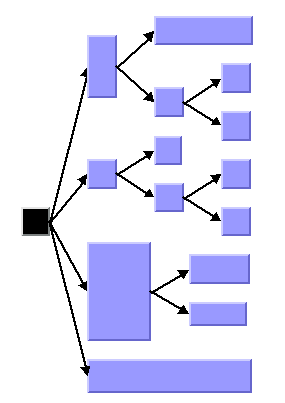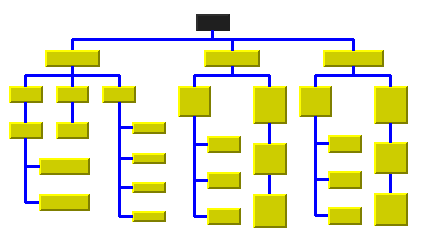TL samples
The following sample drawings are produced
with the Tree Layout.

Tree layout in free layout mode with
center alignment and flow direction to the right

Tree layout with flow direction to the
bottom, orthogonal link style, and tip-over alignment at some
leaf nodes

Tree layout in radial layout mode with
aspect ratio 1.5
What types of graphs suit the TL?
- Primarily designed for pure trees. It can also be used for non-trees, that is, for cyclic graphs. In this case, the algorithm computes and uses a spanning tree of the graph, ignoring all links that do not belong to the spanning tree.
- Directed and undirected trees. If the links are directed, the algorithm automatically chooses the canonical root node. If the links are undirected, you can choose a root node.
- Connected graphs and disconnected graphs. If the graph is not connected, the layout algorithm treats each connected component separately. Each component has exactly one root node. In this case, a forest of trees is laid out.
Application domains for the TL
Application domains for the Tree Layout
include:
- Business processing (organizational charts)
- Software management/software (re-)engineering (UML diagrams, call graphs)
- Database and knowledge engineering (decision trees)
- The World Wide Web (website maps)